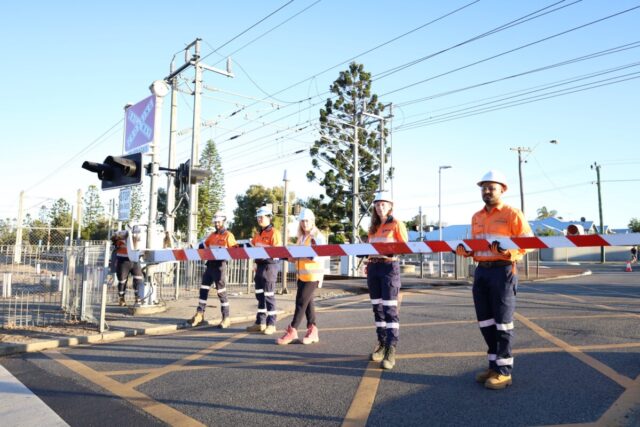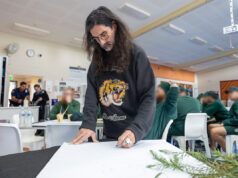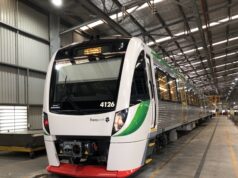Despite months of warnings of the Armadale/Thornlie line shutdown, many commuters still arrived at the Kelmscott Train Station on Monday morning ready to board their train as per usual.
Examiner Newspapers spoke to rail staff on Monday who said there was a bit of chaos on the first day of shut down, but not nearly as much as they were anticipating.
Signs have been up out the front of train stations for months, loudspeaker announcements have been blaring every couple of minutes alerting passengers to the changes, and all major news outlets around Perth have been reporting widely on Monday’s planned shutdown.
However, staff still had to explain to quite a few – mostly elderly – passengers that their trains were being replaced by buses for 18 months.
And while there were plenty of buses to accommodate everyone at Kelmscott, there were still a few teething issues as passengers learn to acclimatise to bus life.
“Buses are not as predictable as trains, because you can’t control traffic and what happens on the road. People were frustrated that their bus hadn’t arrived exactly at its scheduled time. We had to explain that the times listed are more of a guideline,” one staff member said.
He said that while buses do take a little longer than trains to reach their destination, that passengers who commute from the station to the city were only being put out by an extra 20 minutes, with the new blue-tooth traffic light technology helping to streamline the process.
Virtual receivers to track the movement of buses on the network have been activated at 40 traffic signals to automatically keep traffic lights green for up to 30 additional seconds for late-running rail replacement buses.
In Armadale, too, Transperth staff said Monday had gone off without a hitch, with passenger numbers a lot lower than expected.
“But Tuesday was busier. I think a lot of people are waiting to see how it goes,” one staff member said.
“We had one gentleman who made the effort to get back off the bus today to tell us what a pleasure his journey had been.”
But there were plenty of online anecdotes which countered the Transperth staff’s positive accounts.
One person’s usual 35-minute commute from Challis Station to Perth had turned into a 75-minute nightmare on the 907 rail replacement route.
Another person said their trip from Kelmscott’s Stargate Shopping Centre to Perth on the new limited stops 221 took over an hour at 7am on Monday.
High school student Annika was 45 minutes late to school on Monday when the 907 failed to show up at the brand-new Armadale bus station.
She eventually boarded a 220 which took about 10 minutes longer to ferry her to Kelmscott, and dropped her off a few hundred metres away from her usual stop.
“It was confusing and it really messed up my day,” she said.
Passengers from Armadale had more consistent success with the new 529 route to Cockburn Station with a quick transfer to the Mandurah line.
Deanna said, if anything, her travel time from Armadale to Elizabeth Quay was marginally shorter.
“The train was ready to go when I got to Cockburn, so I legged it. We’ll see how it goes today,” she said.
“One good thing is there’s a lot less meth heads on the buses.”
Deanna said she’s still in two minds how she feels about the line upgrade, and whether it will all be worth it in the end.
“That’s the big question isn’t it. I’m a little perplexed why it’s being shut for so long. They should have done it during COVID when we were all locked down,” she said.
Transport Minister Rita Saffioti responded to this common criticism while celebrating with workers as the first boom gates were removed at Mint Street on Monday morning.
“We carefully considered the options for delivering these works, and a single shut was the best way to get the job done in the shortest, safest, and most efficient way,” she said.
“This project is going to fundamentally change this 130-year-old train line, but we know to reach that destination, a period of disruption lies ahead.
“The first few weeks will likely be the most disruptive as people get used to new ways of getting around, but my transport agencies will monitor conditions very closely and if there are opportunities to improve traffic movement, we will.
“We know this will be a difficult period for commuters and we can’t thank them enough for their patience as we undertake these works. The final product will be transformational.”
This week all level crossings between Kelmscott Station and Cardup Siding were officially decommissioned. In addition, boom gates were removed from Mint, Oats, Hamilton, Wharf and Williams Streets, and Welshpool Road.
The removal of the boom gates from the 12 level crossings will be among the first works completed.
Other essential works being delivered in the first few weeks include the decommissioning and removal of tracks and other infrastructure within the rail corridor, and the demolition of old stations that are set to be rebuilt.
Once demolition works are completed, piling for the new rail viaduct structure will begin.














